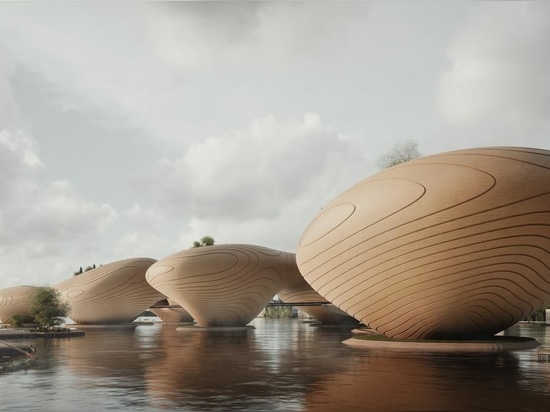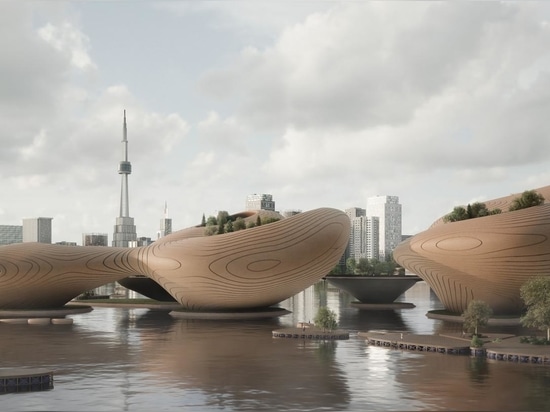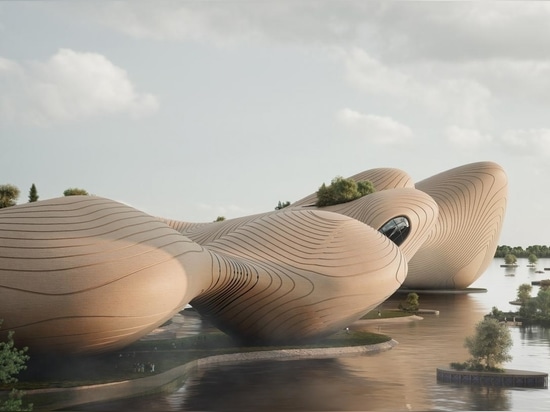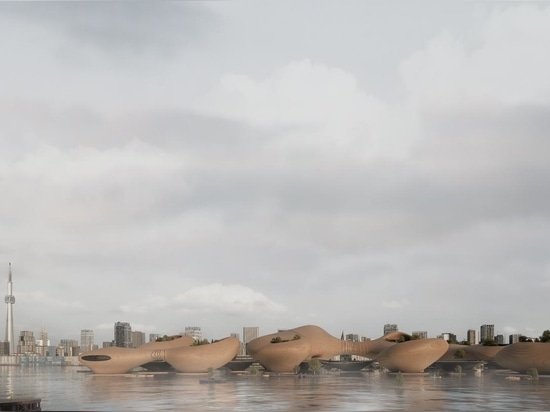
#PUBLIC ARCHITECTURE PROJECTS
Toronto Media District
Located in the district-based developed city of Toronto, the Media and innovation center is carefully sited close to similar culture and entertainment-based districts to connect with the existing buildings in functional and physical ways.
Addressing social resiliency in this area, the project is designed to become a suitable place for everyone, providing an exciting space for learning, practicing, performing, and exploring. To ensure this concept will extend to the form of the buildings and evoke a sense of curiosity, they are designed organically to become an eyecatcher among the cube-shaped neighboring buildings.
Inspired by the cross sections of nationally loved maple trees, the buildings take organic forms with open and green spaces on the upper levels mimicking the dark spots visible on cross sections of dead maple trees. These shapes get reduced by the size as they get closer to the sea surface, where they will be placed on bearing pilots reaching deep into the water.
To seek a solution for emerging natural disasters like the drastic rise of sea levels or massive floods, the buildings are piloted high above the water to resemble the nearby trees floating on the water's surface, giving it a sense of lightness while providing safety in times of need. Also, two different types of access routes are designed for these buildings on two levels; one is deep in the ground and reaches the buildings from below, providing quick access to the city’s public transport, like metro stations. At the same time, the other one is located 15 meters high above the body of water giving access to the buildings from above. These two routes both are designed and specialized for bicycles and pedestrians. They provide safety during a natural disaster and create shelter from the northern seashores' cold and windy weather.
This Media district consists of four different zones, each hosting 3-6 separate buildings, working together to create a calm and suitable place for artists, citizens, visitors, and workers. The innovation zones include the Educational and Recording/Performing zones located next to each other, having some shared spaces in between to work and connect more easily. In contrast, the cultural and entertainment zones are considerably distanced from them to be more distinguished, providing a sense of privacy for the innovation zones.
The location of each zone is precisely chosen to require the shortest possible routes to connect the buildings while having enough open spaces between them to provide a safe route for maritime transportation, from massive ships to cruising boats.
The building's shape and the choice of Bio-Based materials have shaped water resistance massive forms which will survive intense floods and continue to function in higher levels of the sea surface, unlike most buildings founded in water. These buildings are shaped and designed with bio-based materials, organic forms, and structural solutions to create a better connection between architecture, technology, and nature.
DESIGNED
2022
TECHNICAL DATA
Built Area:220000
Site Area: 100000
Tools Used: rhino-Twinmotion -photoshop
Design Year: 2023
Completion Year: 2028
PROJECT TEAM
Mohamad Rahimizadeh , Shaghayegh Nemati , Zahra Tavasoli , Ziba Baghban , Mahdi Jam , Hadi Koohi , Pardis Ahmadi





